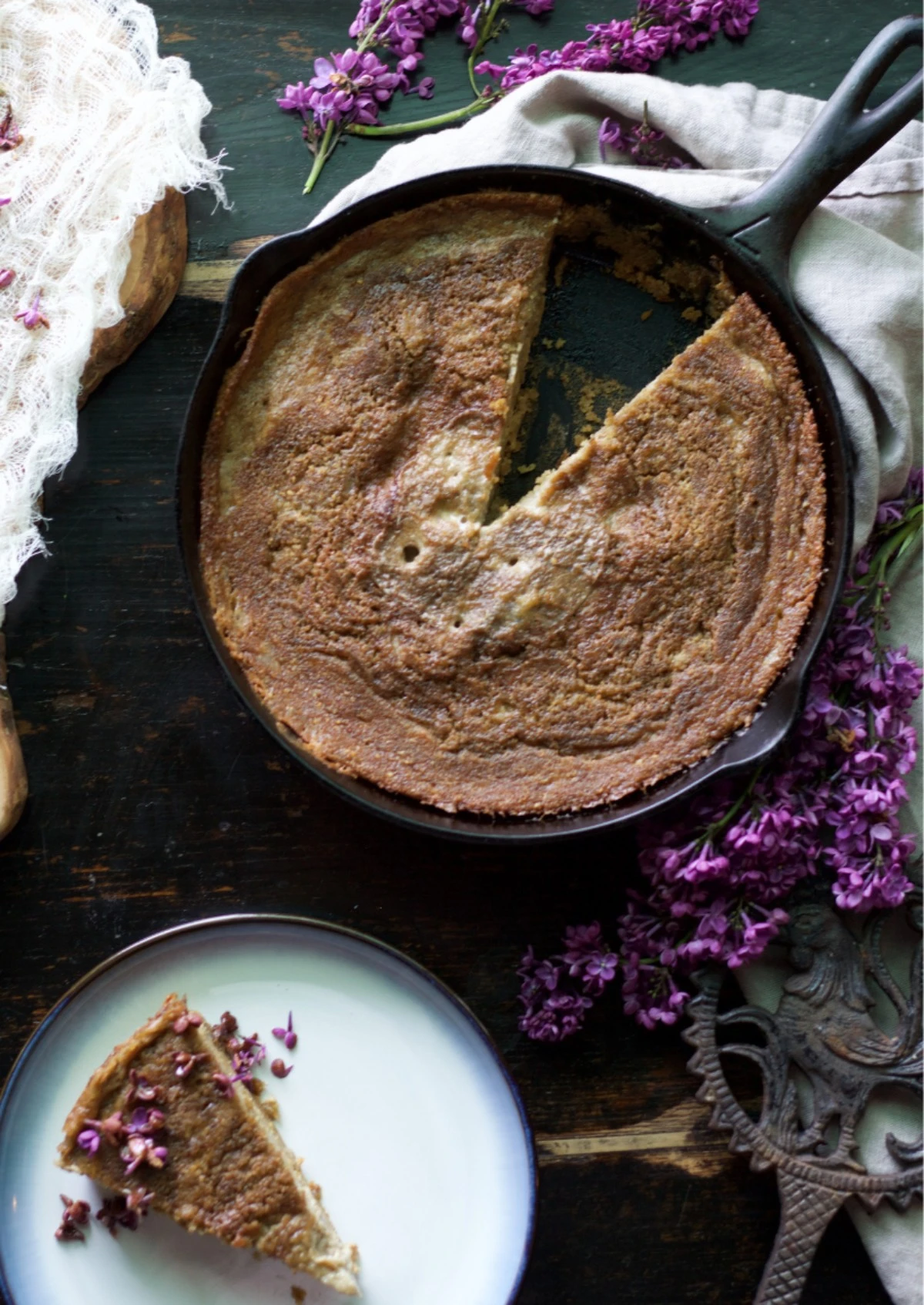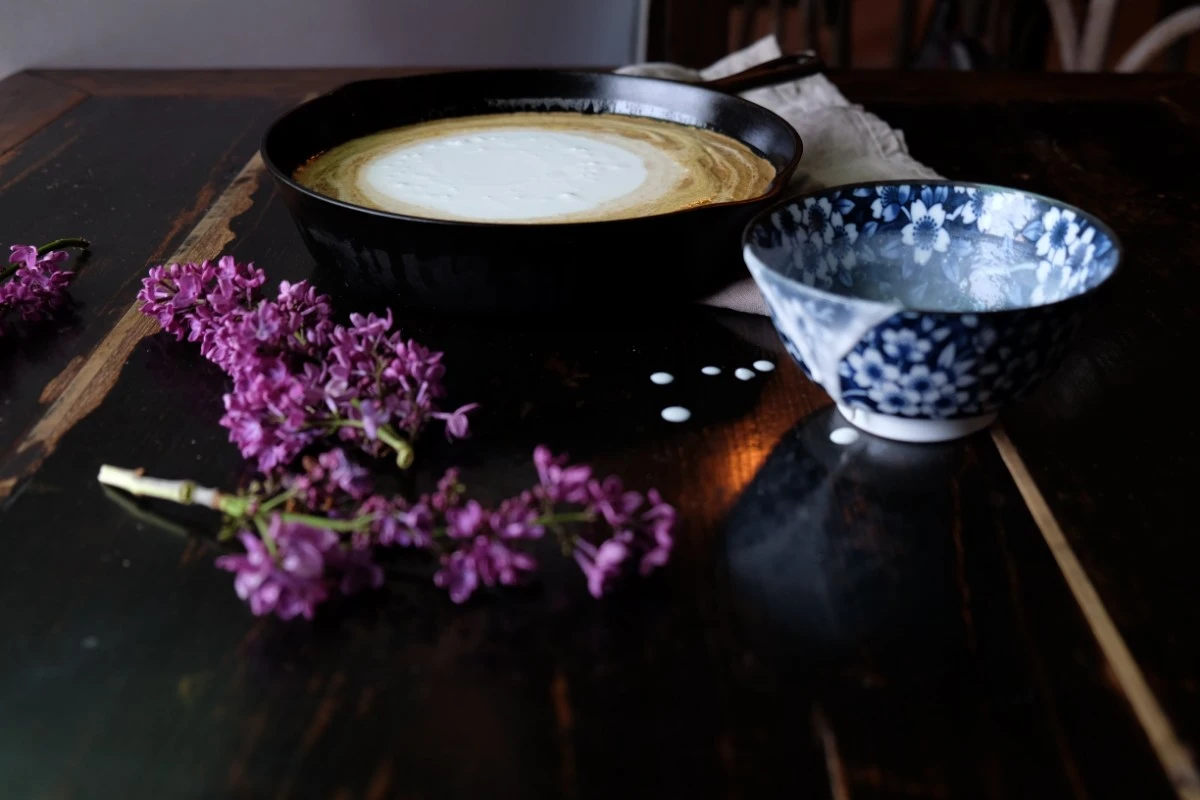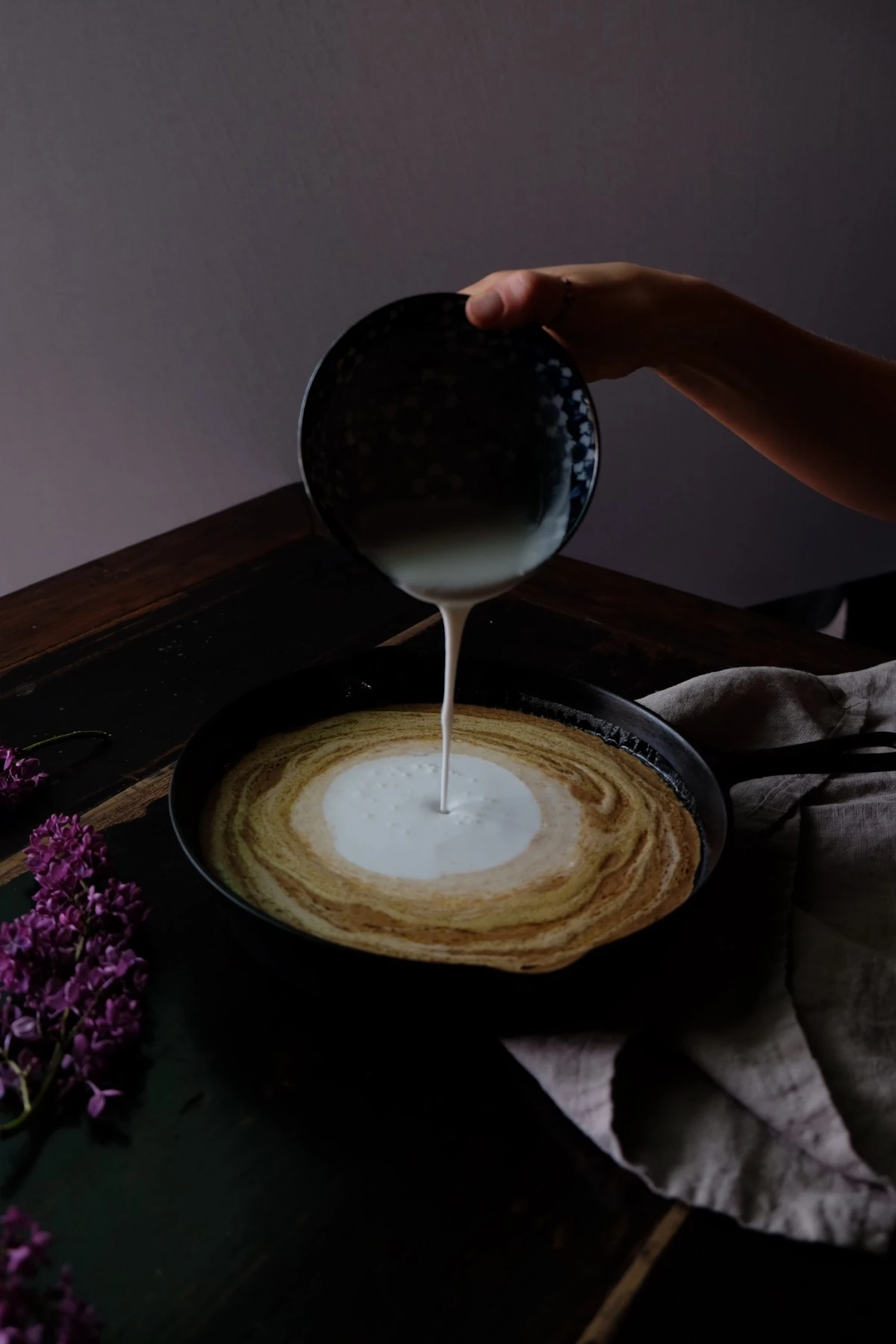in defense of cake: gluten free spider cake

“A party without cake is just a meeting” – Julia Child
RH: Leave it to Julia to perfectly describe my feelings about cake. I try to find every possible reason as to how I can justify having cake as often as possible.
As a pastry chef, I make a lot of cake. I mean a lot. An industrial Hobart mixer filled with devil’s food cake batter no longer phases me, but these are not necessarily the good for you types of cakes.
When I first started working in kitchens after having been a home cook and private chef, the sheer volume of ingredients and size of the kitchen equipment overwhelmed me. The ingredients too. Components of many restaurant kitchen pastry recipes were things I had never heard of and had no idea how to use. Trimoline syrup? Cremodan ice cream stabilizer? I wondered why would I need more than just sugar, butter and flour to make a great dessert.
Fast forward to the present and I now understand these ingredients and how and why I should use them while preparing high-end desserts in a restaurant setting. While I use these ingredients daily at work, they’re certainly not what I would lean on for everyday or home-cooked foods. I like to think of these desserts as every once in awhile, ‘treat yourself’ or splurge types of sweets.
While I could allow my job as a pastry chef conflict with my beliefs and lifestyle around wholesome and nutritive foods, instead I enjoy the challenge of taking a classic recipe or something full of less-than-great-for-you ingredients and reinventing it with healthier ingredients.
Dilemma solved. I get to eat more cake.

Enter: The Spider Cake
I don’t remember how I first heard about the traditional New England Spider Cake, but I know as soon as I looked it up I had to make one and make it better than the original. And by better I mean better for me.
The history of the cake goes back to at least the late 1800’s where the first published recipe can be found. What makes this recipe unique is the layer of custard that forms in the middle of the cake while baking. The original recipe calls for heavy cream, butter, cane sugar and white flour which we have swapped out for more wholesome ingredients while still preserving the quintessence of the original recipe – the custard-y center. We’ve added candied flowers as a topping for a delicate addition and crunch while still leaving the cake as the main focus of the dish.
The unusual name comes from the fact that the cake is made completely in a cast iron skillet. Spider is another name for a cast iron pan which used to be raised on legs to be cooked over the hearth, flat bottomed stove top versions came later.
Ingredient Upgrades:
1. Gluten free flours
In place of the white flour used in the original recipe, we used a combination of both almond flour and sorghum flour. Both are gluten free and both have characteristics that play nicely with the cake.
Almond flour has a higher fat content and denser texture than grain flour which lends itself nicely to the texture of the cake. The added health benefits of fiber. Protein, magnesium, and vitamin E are a great bonus as well. We used extra fine almond flour which can be easily found at most health food stores. If you can’t find extra fine grind, simply add your almond flour to a blender and pulse the flour, briefly, a few times to break it down but not enough to release the fats in the flour and start turning your flour into almond butter.
The other gluten free flour we chose is sorghum flour – one of the lesser known options in the baking world. Sorghum is commonly grown in India and Africa and traditionally the flour has been used to make pancakes, porridges, beer and flatbreads throughout different cultures. Sorghum flour is also high in protein, iron and dietary fiber. The protein and starch found in sorghum takes longer to digest than similar grains which makes it a smarter choice for those with blood sugar issues – or simply a smart addition to any sweet treat to help make it a bit healthier.
2. Coconut Palm Sugar
Let’s call a spade a spade here – no matter what kind of sugar you use, sugar is ultimately still sugar. Similar to cane sugar, coconut sugar is 70-80% sucrose (composed of 50% fructose and 50% glucose). Without compromising the outcome of the dish and the overall decadent flavor and effect on the palate, it is difficult to completely omit sugar or at least use some form of minimally processed sugar for desserts.
In place of conventional cane sugar, our choice sweetener for this recipe is coconut sugar. When it comes to alternative sugar sources we feel that coconut sugar is near the top of the list. It can have a strong coconut-y brown sugar or caramel flavor, but since we’re already using coconut milk and cream in the recipe it compliments the dish perfectly.
Nutritionally, coconut sugar is friendlier on the body since it contains inulin. Inulin belongs to a class of dietary fibers called fructans. Most plants that synthesize and store inulin do not store other of types of carbohydrates such as starch. Studies have found that inulin helps to improve glycemic control while digesting and absorbing nutrients. Simply put, the inulin in coconut sugar helps reduce the glycemic effect of the sugar on your body.

Spider Cake
Ingredients:
2 cups coconut milk (recipe for our homemade version, below)
4 teaspoons apple cider vinegar
—
1/2 cup sorghum flour
1/2 cup fine almond flour
3/4 cup yellow cornmeal
3/4 cup coconut sugar
1/2 teaspoon baking soda
1/2 teaspoon Himalayan salt
—
2 free range eggs
2 tablespoons ghee
1 cup coconut cream
Instructions:
1. Preheat the oven to 350F. Combine the coconut milk and apple cider vinegar and set aside for 5-10 to allow the milk to sour.
2. In a large bowl, combine the flours, coconut sugar, cornmeal, salt and baking soda and mix well until the mixture is homogenous.
3. Whisk the eggs into the soured milk and add to the dry ingredients. Stir well and set aside.
4. Gently melt the ghee in a 10-12 inch cast iron skillet. Pour in the batter. Next, pour the coconut cream into the center of the batter. Carefully transfer the skillet to the oven and bake until the cake is browned and the center is set and no longer loose, around 45-50 minutes.
5. Allow the the cake to cool slightly before slicing. Serve with candied flowers or a drizzle of maple syrup.

Homemade Coconut Milk
4 cups filtered water
2 cups unsweetened, dried coconut flakes
Combine both water and coconut flakes in a blender and blend on high for one minute until frothy. Strain the liquid through a nut milk bag or folded cheesecloth and discard the solids. The coconut milk should last up to 5 days in the fridge.

Candied Lilacs
Pesticide- free, organic lilac blossoms, separated from stems
1 extra large egg white, room temperature
1/2 teaspoon water
1 cup coconut sugar, finely ground
Small paint brush (optional)
Tweezers or chopsticks
In a small bowl, combine the egg white with the water and beat lightly with a fork until the white just shows a few bubbles.
Add the sugar to a shallow bowl. If your sugar is too coarse, briefly pulse it in a blender or food processor until it reaches the texture of a fine caster sugar.
Hold a blossom with chopsticks or tweezers and gently brush the petals using a small paint brush with the egg white mixture or lightly dip the top of the flower in the mixture and then shake off any excess liquid.
Next, holding the blossom with the chopsticks over the sugar bowl, lightly sprinkle sugar evenly on all sides of the flower or gently dip the flower onto the sugar.
Repeat with the remaining flowers.
Place the sugared blossoms onto a parchment paper lined tray and allow to dry at room temperature for 12-36 hours so that they are completely free of moisture. If not completely dried the flowers may grow mold. To speed up the drying process you can place the tray in an oven with a pilot light overnight or in a oven set to the lowest temperature possible with the door ajar for a couple hours.
Store the dried flowers in an airtight container.
